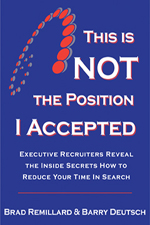Don’t Be Like Groucho Marx – Job Search Tactic #2
Groucho Marx once said “I don’t want to belong to any club that would accept me as a member.”
Groucho must not have been conducting a job search when he made that comment.
Joining Groups (like clubs) on LinkedIn is an excellent way to engage with people who hold a similar interest, make new contacts, network, and discover hidden job opportunities.
Your groups display on your LinkedIn Profile. When I click your profile, I can see which groups we have in common. As a recruiter, I usually focus on searches within groups first due to the ease of contacting other group members.
Here are some of the parameters on joining groups on LinkedIn:
LinkedIn allows you to join 50 groups
You can post roughly 7500 news feed items per 24 hour period. These can be multiple feeds within the same 24 hour period into the same group. I have not yet done a test to ascertain the precise number.
You can post unlimited discussions (I have not come across a limit yet within a 24 hours period. Again, I’ve not tried to test the system by posting more than 50 in a 24 hour period.
You can send messages to other group members without using your valuable inmails nor do you have to know the email address. I’m not sure if there is a limit on the number of messages you can send directly to group members. I have yet to hit it if there is a limit.
What groups should I join you might ask?
- Your alumni group
- Geographically based network groups for individuals in your city
- Association or trade groups that focus on your industry, such as Construction or Telecommunications
- Functional specialty groups, such as those for VPs of Marketing or CFOs
- Charitable groups that focus on causes you support
- Job Search Groups, such as the IMPACT Hiring Job Search Discussion Group
Now that I’ve joined a few groups, what should I do next?
Even though in a previous post I suggested you not be a lurker, I give you permission to do short-term lurking. Gain a sense of the culture of the group. Review the other messages in the group first.
- Are group members discussing job search related issues?
- Are group members supportive of each other?
- What type of news feeds are being posted into the group?
- Are there job leads being posted by group members under the jobs tab?
- How passionate are group members in responding to questions or discussion points?
You’ve lurked long enough – it’s time to jump in and become a valuable and active member of the group.
What kind of benefits might I expect from the time investment of doing all these activities within all my groups:
- You’ll be enhancing your PERSONAL BRAND by establishing your involvement, focus, and expertise in the various groups.
- Others will be attracted to you and want to connect with you on LinkedIn directly
- As Hiring Managers and Executives frequent these groups, you’ll become noticed by the individuals who may someday hire you
- You’ll be starting to dramatically expand your connections and the massive net it takes to capture hidden job market leads and referrals.
Barry Deutsch
P.S. Don’t forget about the Webinar my partner, Brad Remillard is teaching on March 26th, titled “How to Find Your Next Job on LinkedIn”. See the promotion for the Webinar in our right-hand sidebar.










